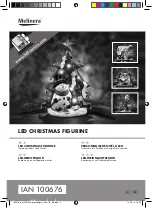
CB (E7) 06/2018
Page 132/174
20. Avoiding microbial contamination
The main types of microbial contaminants in cell and tissue culture are bacteria, fungi, yeast,
mycoplasma, and viruses. This chapter gives an overview of potential sources of contamination and
precautions and measures to eliminate them.
20.1 Cells and media
•
Primary cultures from the original tissue
•
Cells / cell lines from unknown sources or from cell banks: Use only cells of known and tested origin.
Monitoring and routine screening of new cultures.
•
Media and sera: Use only sera of known and tested origin (mycoplasma free, e.g., UV or
γ radiated).
•
Virus suspensions, antibody solutions etc. Use only reagents of known and tested origin.
•
Laboratory instruments, media and reagents that were exposed to possible contaminated cultures
must be sterilized / autoclaved / disposed.
•
Antibiotics in the cell culture media may prevent bacteria detection: Use antibiotics selectively and
economically.
20.2 Laboratory conditions / equipment around the incubator
Possible sources of contamination in the cell culture lab are airborne germs, lab equipment, building
features, and the lab personnel.
•
Keep pipettes and instruments sterile after autoclaving.
•
Bio safety cabinets (laminar air flow) should have a minimum of items apart from aspirator tube and
burner. Items shall be positioned within easy reach and separate from each other. Disinfect surfaces
with an alcohol-based disinfectant before and after use, clean the space underneath the bench, and
carry out regular sterility tests of the filters.
•
Regular cleaning / disinfection of laboratory equipment such as a centrifuge, microscope, water bath,
refrigerator, and telephone.
•
No equipment should be placed on the floor.
•
Rough or humid walls are not suitable.
•
Identify leaking doors and windows and make them airtight.
•
Use air conditioning with special filters.
•
Reduce the number of personnel and their movements in the lab by careful positioning all relevant
equipment. For practical reasons, install the chamber close to the laminar air flow bench.
•
Regular microbiological monitoring of the cell culture laboratory.
20.3 Working and behavior in the lab
Sources of contamination are often the laboratory personnel themselves (surface germs, oral flora droplet
transfer) and handling the equipment and cultures. We recommend staff training in aseptic techniques,
laboratory safety and good laboratory practice (GLP).
Examples of general rules to reduce the contamination risks
•
Reduce hand germ count (wash hands with antimicrobial soap, dry with paper tissues, and rub dry
hands with alcohol-based solution).
•
Wear appropriate clothing (work coat, shoes, face mask)
•
Keep as few personnel as possible in the cell culture lab.
Содержание CB 170
Страница 165: ...CB E7 06 2018 Page 165 174 25 9 Dimensions CB 170 Dimensions in mm...
Страница 166: ...CB E7 06 2018 Page 166 174 26 Certificates and declarations of conformity 26 1 EU Declaration of conformity...
Страница 167: ...CB E7 06 2018 Page 167 174...
Страница 168: ...CB E7 06 2018 Page 168 174 27 Product registration...
Страница 175: ......
















































